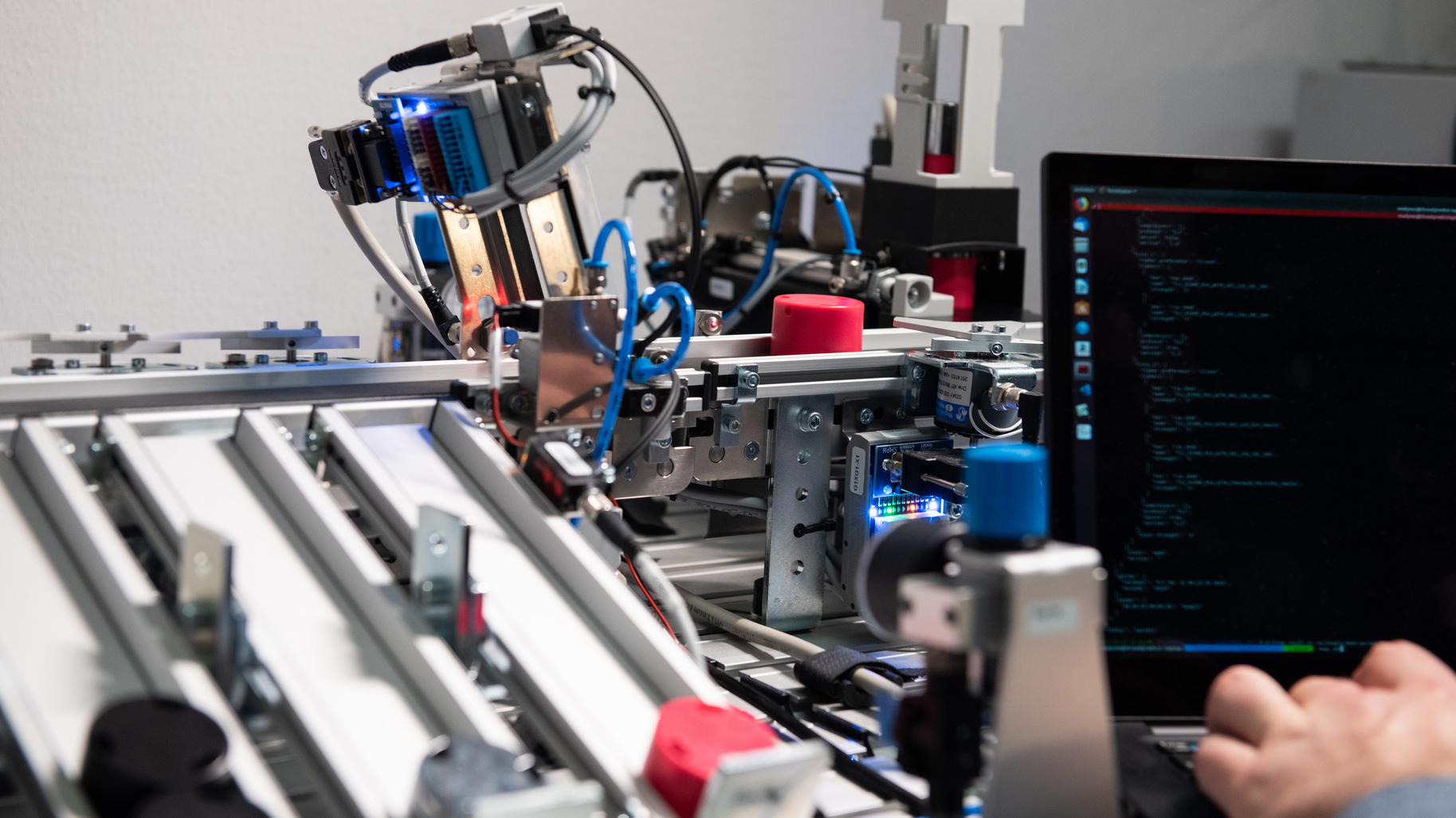AI@EDGE: the artificial intelligence of the future - safer, faster, more open
Date:
Changed on 08/06/2022

To transition from artificial intelligence (AI) centralised on the cloud to embedded AI, getting closer to end users: this is the primary objective for the 19 European partners who have come together to form AIAEDGE. Coordinated from Italy by the Bruno Kessler Foundation, the project, which was launched in January, will receive more than eight million euros’ worth of funding over a period of three years as part of the Horizon 2020 call for proposals ICT52 2020. It was the only project selected from the thirteen submitted by Inria project teams to this call for projects, the aim of which was to support the development of information and communication technologies (ICT). There was a particular focus on artificial intelligence, a subject given priority status by the upcoming research and innovation programme “Digital Europe”.
For Inria, the total amount of EU funding stands at more than €300,000. This will be used to recruit a PhD student and an engineer, who will join the two project leaders: Jérôme François, a researcher at Inria, and Abdelkader Lahmadi, a teacher-researcher at the University of Lorraine, both from the RESIST project team. They will work together alongside figures from the worlds of academia, science and industry, all motivated by one common goal: To develop “a secure and reusable artificial intelligence platform for edge computing beyond 5G networks.” The project promises a whole host of potential applications in manufacturing, telecommunications, health, logistics and transport.
“Increasingly common in the deployment of services via the internet, AI is no less compartmentalised: it is stored either on connected devices (smartphones, tablets, connected objects, etc.) or on the cloud”, explains Jérôme François. “With network infrastructures such as 5G, for example, it might be possible to deliver services end-to-end with more bandwidth, connectivity, security, etc.” This is where the concept of “edge” comes into edge computing. Unlike with the cloud or data centres, which keep data in the one place, this type of emerging IT architecture can be used to process data on the edges of a network, getting closer to users. It does this through devices which generate data, such as connected objects, smartphones, computers or local servers.
To develop robust and reusable models
Whether it’s reducing data processing latency, improving processing and analysis capacities or optimising the effective bandwidth, combining artificial intelligence with edge computing could have a range of benefits. But there are also challenges involved in implementing it: “What we want to do is to divide tasks up between connected devices, servers and networks and to ensure they interact smoothly with each other over time, but that’s not all”, explains Jérôme François. “It will be necessary to deploy applications and develop reusable and robust AI models in order to manage different types of resources while keeping them secure, particularly against the threat of reverse engineering. This is made more complicated by the increase in the volume of resources being shared between users.”
A highly-ambitious, highly-demanding project
"Having been put in charge of distribution and standardisation, and as a member of the project management team, Inria will play a vital role when it comes to making scientific breakthroughs and will have an impact on industry at a Europe-wide level.
The institute will help to bring together the different skillsets of partners within the consortium, figures known for the role they play in the European 5G landscape and their expertise in artificial intelligence (AI). It will also contribute to two key scientific subjects in the field of security. The first will involve researching ways of using AI – with a particular focus on reinforcement learning – to react quickly to attacks.
The second, meanwhile, will involve working on the issue of confidentiality and resilience in relation to the machine learning algorithms that will be adopted by the AIAEDGE platform. These contributions will have to meet very high standards.”
Alessia Torre, project manager, and Marco Pistore, director of research at the Centre for IT and Communications Technology at the Bruno Kessler foundation (FBK-ICT Irst Center)
Issues surrounding heterogeneity, security and data volumetrics are central to the use cases that AIAEDGE will be focusing on. Of the four, one concerns collaborative perception for vehicle networks: “This involves driverless vehicles sharing data in order to predict and respond better to emergency situations such as accidents or traffic jams”, explains the researcher.
Another case RESIST is taking a particular interest in is secure and multipartite AI for the internet of things, particularly in the industrial sector. “Whether it’s production lines, cameras or temperature sensors, the challenge lies in grouping together different data sets from different systems in different places and ensuring they remain secure”, explains Jérôme François. AIAEDGE will also explore the use of drones for monitoring infrastructure and infotainment on-board aircraft, looking “at ways of developing more personalised content and services that will follow passengers on their journeys”.
8 European countries, 19 partners
Italy: Bruno Kessler Foundation (coordinator), Centro Ricerche Fiat SCPA, Politecnico di Milano, Athonet SRL, Italtel SPA, Telecom Italia
France: Inria, Cnam
Sweden: Research Institutes of Sweden AB (RISE), Ericsson AB, the Lund University
Germany: Deutsches Forschungszentrum für Künstliche Intelligenz GmbH, TriaGnoSys GmbH
Spain: Atos Spain SA, Fundació Privada I2CAT (Internet i Innovació digital a Catalunya), Aerotools UAV SL
Greece: Institute of Communication and Computer Systems (ICCS)
Cyprus: Eight Bells Ltd
Ireland: Software Radio Systems Ltd